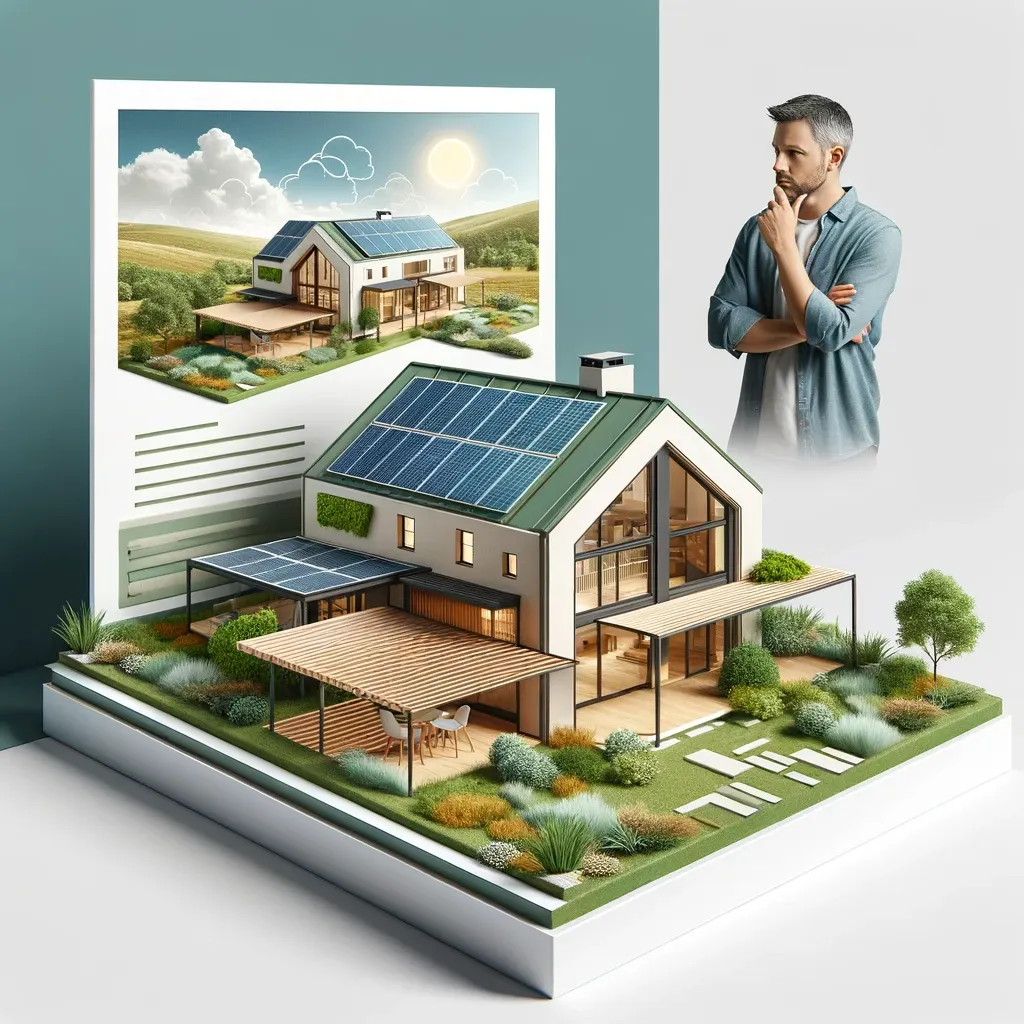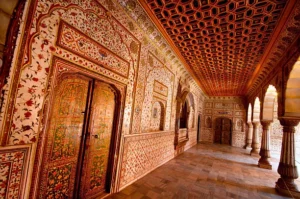Introduction to Sustainable Architecture
I associate sustainable architecture with a design philosophy that embodies the ideas of environmental, social and economic sustainability. It is an idea in the field of architecture that tries to reduce pollution from buildings through improvement on efficiency and moderation with respect to materials, energy, space used for building. Sustainable architecture is not a mere fad; it represents an inevitable transformation in the way we plan and develop spaces for dwelling, laboring, or recreation.
Sustainability is of utmost importance in the modern world. The needs of buildings are bound to increase in proportion with the population projected to reach over nine billion people by 2050. This increase requires a shift in paradigm towards sustainable practices to avoid losing every resource we have and damaging our planet. The World Green Building Council estimates that buildings are responsible for 39% of global energy-related carbon emissions, comprising the operational stage in 28%, and materials & construction being at an amount equal to approximately only 10%. This very statistic highlights the importance of sustainable architecture as a priority in our future.
Today’s sustainable architecture is setting the path toward an eco-friendly future by implementing new design concepts helping to reduce waste, cut down on energy use and create better living conditions for tenants. For instance, solar panels shown above is a common practice in sustainable building designs. These panels generate energy from the sun, thereby reducing dependence on fossil fuels and minimizing greenhouse emissions. Further, sustainable architecture usually includes elements like green roofs, rainwater harvesting systems and materials grabbed from conscientious suppliers among other factors towards a stable built environment.
| Aspect | Traditional Architecture | Sustainable Architecture |
|---|---|---|
| Energy Source | Relies on non-renewable energy | Utilizes renewable energy sources like solar and wind |
| Materials | Uses materials with high environmental impact | Employs sustainable materials with lower carbon footprint |
| Water Efficiency | Often lacks water conservation measures | Incorporates water-saving fixtures and rainwater harvesting |
| Waste Management | Generates significant construction waste | Focuses on reducing, reusing, and recycling materials |
| Indoor Environment Quality | May not prioritize occupant health and well-being | Designs for natural light, better air quality, and occupant comfort |
The Rise of Sustainable Architecture
The concept of sustainable architecture has evolved significantly over the years. Initially, it was a response to the energy crises of the 1970s, which sparked an interest in energy efficiency and alternative energy sources. Since then, the movement has grown to encompass a wide range of environmental, social, and economic concerns. The Brundtland Commission’s report in 1987, which introduced the term “sustainable development,” was a pivotal moment that brought sustainability to the forefront of architectural discourse. Today, sustainable architecture is not just about energy efficiency; it’s about creating buildings that coexist harmoniously with their environment and enhance the well-being of their occupants.
Urban planning trends have increasingly begun to reflect the principles of sustainability. Cities around the world are recognizing the need to mitigate the impacts of climate change and are adopting green building standards and policies. For example, the Leadership in Energy and Environmental Design (LEED) certification has become a globally recognized symbol of sustainability achievement and leadership. According to the U.S. Green Building Council, as of 2021, LEED-certified buildings are estimated to have diverted over 80 million tons of waste from landfills. This trend is a testament to the growing commitment to sustainable architecture within urban planning.
Several cities have emerged as leaders in sustainable architecture, setting examples for others to follow. Copenhagen, Denmark, aims to become the world’s first carbon-neutral capital by 2025, with initiatives such as the promotion of cycling and green roofs. Singapore’s commitment to green building is evident in its “Garden City” vision, which has led to the development of projects like the Park Royal on Pickering hotel, featuring extensive greenery and energy-saving technologies. These case studies demonstrate the transformative power of sustainable architecture in urban environments.
| City | Sustainability Initiatives | Notable Projects |
|---|---|---|
| Copenhagen, Denmark | Carbon-neutral goal, cycling infrastructure, green roofs | 8 House, CopenHill |
| Singapore | Garden City vision, green building incentives | Marina Bay Sands, Parkroyal on Pickering |
| Vancouver, Canada | Greenest City 2020 Action Plan, renewable energy focus | Vancouver Convention Centre, Dockside Green |
| Stockholm, Sweden | Green building requirements, eco-districts | Hammarby Sjöstad, Royal Seaport |
| Freiburg, Germany | Sustainable urban transport, solar energy promotion | Sonnenhof, Vauban district |
Key Principles of Sustainable Architecture
At the core of sustainable architecture lie key principles that guide the design and construction of buildings with the least environmental impact. Energy efficiency is paramount, with a focus on reducing the energy demand of buildings and increasing their ability to harness renewable energy sources. The International Energy Agency reports that the global building sector must reduce its energy consumption by 30% by 2030 to meet sustainability targets. This can be achieved through passive design strategies that optimize natural light and ventilation, as well as active systems like solar panels and wind turbines that generate clean energy.
The use of sustainable materials and resources is another cornerstone of sustainable architecture. Materials are selected based on their lifecycle impacts, including their embodied energy, durability, and recyclability. The Forest Stewardship Council (FSC) certifies wood products that are harvested responsibly, while materials like bamboo and recycled steel are becoming popular for their sustainability credentials. By choosing materials with a lower environmental footprint, architects can significantly reduce the carbon emissions associated with building construction and operation.
Water conservation and management are also integral to sustainable architectural design. Innovative water-saving technologies and strategies, such as low-flow fixtures and greywater recycling systems, are being implemented to reduce water usage in buildings. According to the Environmental Protection Agency (EPA), if all buildings in the United States installed water-efficient fixtures, the country could save over 3 trillion gallons of water annually. Sustainable architecture also encompasses the management of stormwater on-site through features like green roofs and permeable pavements, which help to replenish groundwater and reduce urban runoff.
| Principle | Strategies | Benefits |
|---|---|---|
| Energy Efficiency | Passive solar design, LED lighting, high-performance insulation | Reduced energy consumption, lower utility bills |
| Renewable Energy | Solar panels, wind turbines, geothermal systems | Decreased reliance on fossil fuels, reduced greenhouse gas emissions |
| Sustainable Materials | Bamboo, recycled steel, FSC-certified wood | Lower environmental impact, enhanced durability and recyclability |
| Water Conservation | Low-flow fixtures, rainwater harvesting, greywater systems | Reduced water usage, decreased strain on municipal water systems |
| Water Management | Green roofs, permeable pavements, bioswales | Improved groundwater recharge, reduced stormwater runoff |
Technology’s Role in Advancing Sustainable Architecture
The integration of technology in architecture has been a game-changer for sustainable design. Advanced software and building information modeling (BIM) allow architects to simulate and optimize building performance even before construction begins. The use of these technologies can lead to a reduction in energy consumption by up to 50% according to the American Institute of Architects. Smart building technologies, such as automated lighting, heating, and cooling systems, further enhance energy efficiency by adapting to real-time conditions and occupant behavior.
Innovations in architecture are continually pushing the boundaries of what is possible in sustainable design. For instance, photovoltaic glass, which can generate electricity while allowing light to pass through, is revolutionizing the way buildings harness solar energy. Additionally, materials like self-healing concrete and air-purifying bricks contribute to the longevity and health of the built environment. These innovations not only promote sustainability but also pave the way for new aesthetic possibilities in architectural design.
Cutting-edge sustainable building technologies are being implemented worldwide with remarkable results. The Edge in Amsterdam, hailed as one of the greenest buildings in the world, boasts a BREEAM score of 98.4% and features a vast array of sustainable technologies including energy-generating elevators and a rainwater collection system. Another example is the Pixel Building in Melbourne, which achieved a perfect score of 100 under the Green Star rating system, thanks to features like a living roof, photovoltaic panels, and a façade that maximizes daylight while minimizing heat gain.
| Technology | Application | Sustainability Impact |
|---|---|---|
| Building Information Modeling (BIM) | Design and construction planning | Optimized resource use, reduced waste |
| Smart Building Systems | Real-time monitoring and control of building operations | Enhanced energy efficiency, improved occupant comfort |
| Photovoltaic Glass | Building façades and windows | On-site renewable energy generation, reduced carbon footprint |
| Self-Healing Concrete | Structural elements | Increased durability, reduced maintenance costs |
| Air-Purifying Bricks | Building envelopes | Improved air quality, health benefits for occupants |
Architectural Design Advancements for Sustainability
The quest for sustainability has led to significant advancements in architectural design. Energy-efficient buildings are now designed with a holistic approach that includes the building’s orientation, insulation, and the use of high-performance glazing to minimize heat loss and gain. According to the U.S. Department of Energy, buildings with optimized insulation and energy-efficient windows can save up to 20% on heating and cooling costs. Moreover, the implementation of advanced HVAC systems that utilize ground-source heat pumps or waste heat recovery can further reduce a building’s carbon footprint.
The integration of green spaces into urban architecture is another design strategy that has gained momentum. These spaces, ranging from vertical gardens to urban parks, not only provide aesthetic value but also contribute to biodiversity, improve air quality, and mitigate the urban heat island effect. The American Society of Landscape Architects highlights that green spaces can reduce city temperatures by up to 6°F, demonstrating their importance in urban planning.
Innovations in architecture are continuously emerging to enhance environmental performance. For example, the use of biophilic design principles, which incorporate natural elements into the built environment, has been shown to improve occupant well-being and productivity. Additionally, the development of adaptive building skins that respond to environmental conditions can optimize energy use and indoor comfort. These advancements are not only environmentally beneficial but also economically advantageous by reducing operational costs.
| Advancement | Description | Environmental Impact |
|---|---|---|
| High-Performance Insulation | Materials that provide superior thermal resistance | Reduced energy consumption for heating and cooling |
| Green Spaces | Integration of vegetation within urban environments | Enhanced biodiversity, improved air quality, cooler urban temperatures |
| Biophilic Design | Incorporation of natural elements into building design | Improved occupant well-being, increased productivity |
| Adaptive Building Skins | Exterior facades that adapt to changing environmental conditions | Optimized energy use, improved indoor environmental quality |
Exploring the Future of Architecture
As we look towards the horizon of urban development, the future of architecture is being shaped by a commitment to sustainability and innovation. Predictions for future urban planning trends suggest a continued emphasis on the creation of smart cities that leverage data and technology to optimize resource use and improve the quality of life for residents. The integration of the Internet of Things (IoT) in urban infrastructure is expected to play a pivotal role, with the global smart building market projected to reach $105.8 billion by 2024, according to a report by MarketsandMarkets.
The potential of sustainable architecture to combat climate change is immense. By adopting green building practices, the construction industry can significantly reduce its carbon emissions, which are a major contributor to global warming. The World Green Building Council asserts that green buildings can lead to a 33% reduction in carbon emissions and a 50% reduction in water usage. As such, sustainable architecture is not just a trend but a crucial strategy in the fight against climate change.
Architects and engineers are at the forefront of designing a future that prioritizes sustainable living. Through the use of advanced materials, renewable energy systems, and innovative design techniques, they are creating buildings and spaces that are both environmentally responsible and economically viable. The collaboration between these professionals and policymakers is essential to establish regulations and incentives that promote sustainable practices. Their collective efforts are paving the way for a future where architecture and urban planning not only meet the needs of the present but also ensure the well-being of future generations.
| Trend | Description | Impact on Sustainability |
|---|---|---|
| Smart Cities | Urban areas that use IoT to enhance performance and well-being | Optimized energy and resource management, improved urban living |
| Green Building Practices | Construction methods that minimize environmental impact | Reduced carbon emissions, lower resource consumption |
| Collaborative Design | Multi-disciplinary approach to building and urban planning | Integrated solutions for sustainable development, enhanced community engagement |
Conclusion: The Imperative of Sustainable Architecture
The journey through the realms of sustainable architecture has underscored its significance as an indispensable approach to building. It is not merely a set of design practices but a comprehensive philosophy that integrates environmental stewardship, social responsibility, and economic viability. The buildings and cities of tomorrow hinge on the principles of sustainability being embraced today. As we have seen, sustainable architecture has the power to reduce carbon footprints, conserve resources, and create healthier environments for all.
The role of architects, engineers, and other professionals in this field is more critical than ever. These individuals are the vanguards of sustainable practices, wielding their expertise to innovate and inspire change. Their commitment to green building codes, energy-efficient designs, and environmentally friendly materials is shaping the built environment in profound ways. By continuing to push the boundaries of what is possible, these professionals are not just designing buildings; they are crafting the blueprint for a more sustainable future.
In conclusion, the responsibility to build a greener future through architecture is a collective one. It requires the concerted efforts of designers, builders, policymakers, and communities. Each stakeholder has a part to play in this grand design, and together, we can ensure that the legacy we leave behind is one of harmony with nature and respect for our planet. Sustainable architecture is more than a choice; it is an imperative for the well-being of our world and the generations to come.













